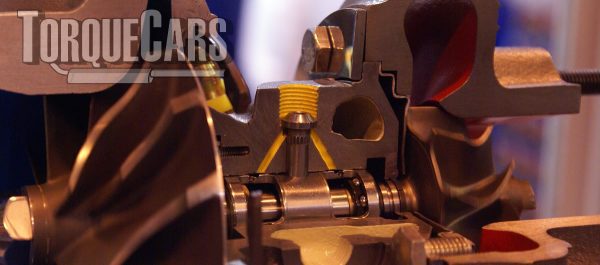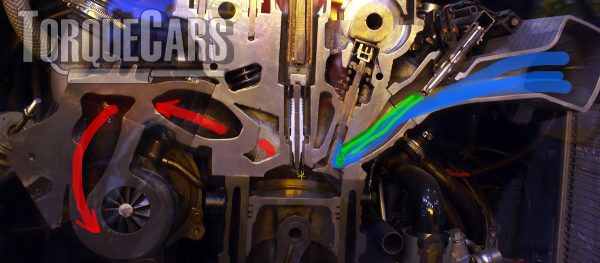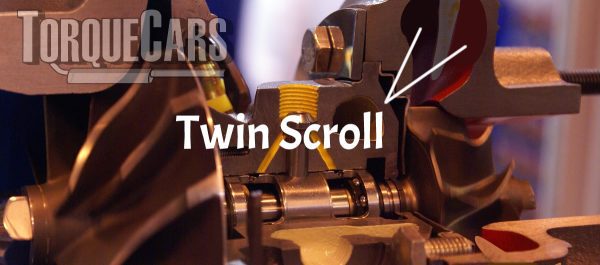Turbocharger FAQ's
"Everything you need to know about turbo upgrades for your car."
Let's look at some questions that we've had about turbos such as "what is a turbo", "why were turbos invented" ,"how do they work ", "what are blow-off valves", "what's a wastegate actuator do" and "what are twin-scroll turbos & what's the difference between them and standard turbos"?
I'm also going to examine whether you should have a twin-turbo set up in parallel or in series and whether there's benefits to converting a twin-turbo into a large turbo.
Please watch our video which explains turbos and all you need to know about them. Be sure to keep up with our latest YouTube content and subscribe.
So why were turbos invented?
Now they used turbo charges in airplanes at high altitudes the air was much thinner and they needed more power
These turbo plane engines could go higher if they used a turbo charger to compress the thin air up there and it enabled them to burn more fuel make more power.
This meant they could go faster and higher and it dramatically altered the way the aircraft worked, one of the significant milestones in airplane development. That turbo charging technology has boiled down to what we have in cars today giving us more power (the altitude benefits are not really important!)
So many modern cars are now fitted with a turbocharger it really enhances the efficiency of an engine and allows you to get substantial amounts of power from it.
What is a turbo charger?
So what is a turbocharger well a turbocharger is a device that's used for compressing the air that goes into an engine
You want to use a turbocharger because if you can get more air into the engine it's carrying more oxygen and when you've got more oxygen you can burn more fuel and that equates to more power

So how does a turbocharger actually work?
Do you remember those windmills you used to get at the seafront the stick with the little windmill on it that used to spin around?
In a way a turbo charger is basically two of those connected back to back so the first little windmill blades if you like is connected to the exhaust so as the exhaust comes out of the engines it rotates that little turbine and that's connected to the intake and as that rotates it sucks in more air
So you're using the momentum of the exhaust gases to rotate a compressor wheel to suck more air in
Now the downside of this operation is that at low rpms low engine speeds you don't get very much exhaust flow and this manifests itself as lag the turbo just isn't producing very much power at those low rpm figures, but thankfully with modern designs as we shall discuss later this is not so much of a problem.
The diagram below shows the red exhaust gases exiting the engine, turning the turbos turbine, which then pulls and compresses fresh blue air, which is mixed with fuel (green) and enters the engine under pressure.

Changing the size of the blades in those turbines can have a dramatic effect on the way the power is delivered
It can for example spool up more quickly or it can produce more power at the top end
What are twin scroll turbos?
There's so many different aspects of technology that have been applied to turbo charges relatively recently for example we've got twin scroll turbos hitting the mainstream.
So the twin scroll turbo splits the engine up so if you have a four cylinder engine two cylinders go into one part of the turbo and the other two cylinders go into the other part.
This enables better scavenging in the engine it usually provides a much quicker spool up
Mitsubishi applied for a patent for the twin scroll turbocharger in the end of 2011 and the patent shows the design of the twin chambers within the exhaust where the exhaust gases are channelled from alternate ports on the engine into very separate chambers

it goes down the inside edge of the twin-scroll directly onto the turbine and because that's a narrower chamber there's less expansion going on you're not suffering from the vortices that tend to form and you get a higher velocity of the air coming out allowing the turbocharger to spool up more quickly and it tends to make more power
So there are lots of benefits to a twin-scroll design but they're not suitable for all engines, for example a 3 or 5 cylinder engine would present challenges and those with unequal exhaust headers can also be hard to setup. (But nothing is impossible, it's more of a question of viability than possibility).
Deciding on a turbo for your project
Now you can compare the turbos outputs and decide on a turbo that suits your application, considerations are many and varied, so here are some examples.
Some people want the power to be delivered from low down and mid-range so for everyday driving you're not that interested in the top-end power. A small sized turbo will usually suffice in these applications.
For motorsports and drag racing you might be in a situation where you want all of the power at the top end and you're not worried at all about the low rpm so you would get a turbo that's set up and match to those specific requirements and this would typically be a large turbo, or twin turbo setup.
We've also got turbochargers with variable vane technology so the angles of those vanes can be altered to maximize the amount of rotation you get from any given flow of exhaust and this can help with low end spooling and improve fuel economy.
BOV's (blow off valves) and Diverters
So as you look down into a turbo you'll see these two turbines and how they rotate and that in its simplest form is how a turbo works
Obviously while the turbo's compressing air you might have a situation where you lift off the throttle and you've got all this pressurized air in the intake
You would use a blow-off valve or a diverter valve to take that air pressure and put it somewhere useful rather than just have it build up in the intake if you've got all that pressure in the intake it could potentially damage the turbocharger itself
Many of the Volkswagen group cars for example would dump the excess air pressure into the intake and if you divert it to the atmosphere you'll end up with error codes and flat spots. That's just the way that their ecu's and everything has been set up so you need to work around this or compromise and stick to the OEM design.
But in other cars, you can just vent the atmosphere and you can have some very creative dump valve noises
Wastegate actuators - what are they and how do they work?
You can control the speed of the turbo with a wastegate actuator that controls the amount of exhaust gases that are flowing through the turbo at any given time.
This can affect the spool up, and you can back off the exhaust flow when you lift off the throttle so you are not overstressing the turbo or intake.
So a turbo is not just a mechanical device that bolts on there are lots of other components that go along with it and they help to enhance the power delivery of the turbocharger.
Are twin turbos better?
Some cars are equipped with two turbos now they can be fitted in parallel so they both come on at the same time.
Alternatively they can be staged so one turbo cuts in at low RPMs and then at a certain point when there are enough exhaust gases to drive both the second turbocharger cuts in.
You've got a debate as to whether to replace a twin-turbo setup with a large single turbo with both system having it's merits and considerations.
So should you swap in a large single turbo or should you just keep it as a twin-turbo charger? Keeping the twin setup allows you to maybe get a more modern design turbo that delivers the power in the stages that you want.
You could also in theory vary the size or profile of the turbos and have a smaller turbo to start off and then switch the power to a larger turbocharger there really is an endless combination and it depends very much on your power needs.
So we'd encourage everyone thinking about turbocharger upgrades to sit down look at the specs then you can decide where in the rpm range you want the power and get a turbo that gives you that profile that you want and delivers the power where you need it.
Further reading - in depth articles about turbos.
- Turbos vs superchargers
- Fitting Turbo to a NA (naturally aspirated) engine
- Turbo upgrades
- Hybrid Turbos
- Twin Scroll Turbos
If you want to learn more, or just get some friendly advice on Tuning your engine please join us in our friendly forum where you can discuss turbo tuning options in more detail with our members. It would also be worth reading our unbiased Car tuning articles to get insights into each modification and how effective they will be.
Please help us improve these tips by sending us your feedback in the comments box below.
We appreciate people taking the time to tell us what our readers have got up to and which tuning mods work best for them on each model of car. We use your comments and feedback to improve the accuracy of these Turbo tuning guides which get regular updates and revisions.
Please Check out my YouTube channel, we're regularly adding new content...
PLEASE HELP: I NEED YOUR DONATIONS TO COVER THE COSTS OF RUNNING THIS SITE AND KEEP IT RUNNING. I do not charge you to access this website and it saves most TorqueCars readers $100's each year - but we are NON PROFIT and not even covering our costs. To keep us running PLEASE Donate here
If you liked this page please share it with your friends, drop a link to it in your favourite forum or use the bookmarking options to save it to your social media profile.
Feedback - What do You Think?
Please use our forums if you wish to ask a tuning question, and please note we do not sell parts or services, we are just an online magazine.
Help us improve, leave a suggestion or tip
Please watch this video and subscribe to my YouTube channel.

 Click to accept YouTube Cookies & Play.
Click to accept YouTube Cookies & Play.